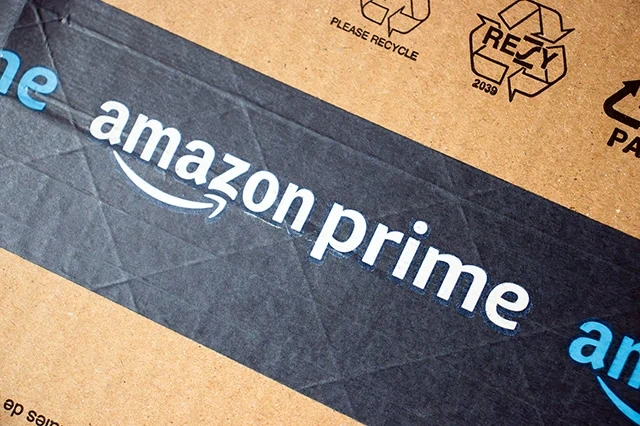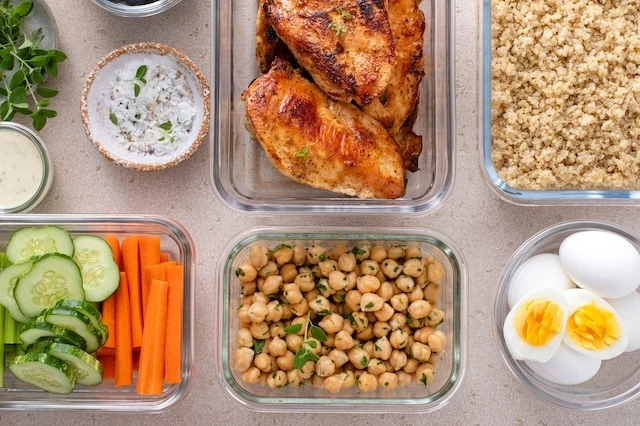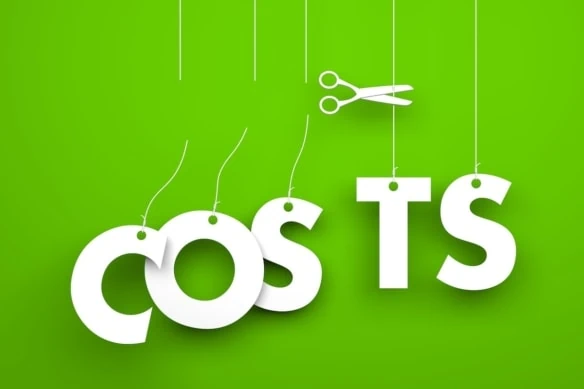“Subtraction is harder than addition.” This simple phrase sums up the problem people have with cutting expenses. It’s easy to add various products and services to your daily routine … but once you’ve become accustomed to them, getting rid of those expenses becomes difficult—even painful.
That doesn’t mean you shouldn’t do it. On the contrary, you’d be surprised at just how much money you can save by eliminating a few regular purchases from your budget. And if you can get over the initial hurdle, you’ll likely find you don’t miss most of those non-essential expenses anymore.
If you’re looking to trim your budget, see how many of the following expenses you can cut down to meet your savings goals.
Reduce or Eliminate These Unnecessary Expenses

I’m going to look at several items, both specific and broad, that many people subscribe to—and that at least a few people would benefit from eliminating from their budget.
One important thing to remember: In many cases, you don’t even have to completely cut these products and services from your life—merely reducing your usage of some of them will be enough to make significant financial progress.
1. Food Delivery

Food delivery is one of the most wildly expensive services that people use.
To start, menu prices on food delivery apps are often higher than the restaurant’s regular menu. Then, there is usually a service fee, delivery fee, or both. Taxes apply to any food order, of course, but you might also see miscellaneous costs. Finally, there is gratuity, which you’d owe at a typical sit-down restaurant, but that you probably wouldn’t pay at a fast-casual or fast-food chain.
It isn’t unheard of for all the extras to add up to between 50%-100% of what the cost would be if you had just picked up an order yourself. Restaurants don’t exactly love it, either; these delivery apps can be prohibitively expensive for them.
So, whenever you can, pick up the order yourself. Or save a little more money by cooking your own meals a little more often.
2. Streaming Services

No, you don’t need to cut out every single streaming service. But chances are you don’t have enough free hours in the day to justify subscribing to Netflix, Hulu, Prime Video, Disney+, Peacock, and Paramount, not to mention also carrying a cable bill.
Choose one or two services that you watch the most and cut the rest from your monthly budget. If you only subscribe to a service for one or two shows, consider buying one-month subscriptions once the full season’s worth of episodes have been released.
If you don’t have any specific interests and just like to have options, consider free, ad-supported streaming services such as Pluto TV, Tubi, and Freevee.
3. Amazon Prime

To be clear: Amazon Prime is a useful, versatile service with a wide variety of benefits that often justify the cost.
But Prime is doing its best to convince its subscribers otherwise.
The cost of Prime has slowly risen over the years while simultaneously offering less. Members frequently complain about increased Prime shipping times, receiving counterfeit items, and poor customer service. In the meantime, free shipping—particularly over a set dollar amount—has become much more commonplace for retailers than when Amazon first introduced it. So now, you can frequently buy an item directly from a manufacturer without having to pay shipping (plus you know it’s the real deal).
The most recent knock: In late December 2023, Amazon announced that Prime Video would begin including ads on Jan. 29, 2024. Want an ad-free experience? You have to pony up an extra $2.99 per month.
If you aren’t ready to completely cut Amazon Prime, you can consider splitting your membership with another family member through Amazon Household. An Amazon Household can have up to two adults (ages 18 and up), up to four teens, and up to four children. Adults still use their own individual accounts, and they can’t see one another’s orders or content. (Note: Users in the same Household must live in the same country, but they don’t need to share the same address.)
Related: 10 ‘Frugal’ Habits That Aren’t Actually Saving You Money
4. Car Washes

A car wash can cost you anywhere between $10 to $30 a pop—so if you get your car washed even once a month, that quickly turns into hundreds of dollars in annual expenses.
But washing your own car is easy, and the equipment (a hose, soap, and towels) are fairly cheap. You can also clean the inside of your vehicle with an inexpensive handheld vacuum.
Car washes aren’t a big monthly expense, but they’re easy to boot from your budget to earn a little extra wiggle room.
Related: Always Buy The Cheapest Versions of These Products
5. Takeout Lunch

You’ve probably heard this one a lot of times, but a great way to save money is to stop eating out for lunch. It’s much cheaper to pack a lunch every day.
Maybe you’ve told yourself that you don’t have time to pack your meals, or maybe you can’t think of enough tasty meals to bring to work every day. Whatever the case, here are a few quick ways to make this task easier:
- Pack leftovers for the next day’s lunch before you even eat dinner. As soon as the food is ready, put some in a reusable container and into your lunch bag. This ensures you’ll have enough saved for lunch and that you won’t be too tired to pack it once you’re full and sleepy.
- Have a meal-prep day. Most people use Sundays to make a lot of food and pack their lunches for the entire week. (This method also solves the problem of not having time during the week to pack lunches.)
- The internet is full of recipes for people who have little time. Just search “30-minute meal-prep recipes,” and you’ll be buried in enough meal ideas to last you the rest of your life.
- Keep a variety of grab-and-go meal options, like Lunchables, microwavable meals, and snack packs. It’s not as cost-effective as making your lunches, but it’s still a cheaper alternative to eating out.
Related: Consumers Should Avoid These 10 Products at Walmart
6. Fresh Out-of-Season Produce

Fruits and vegetables are a vital part of a balanced diet, and you should in no way cut them out of your budget. But you can be smarter about which ones you buy, and when.
Produce prices can actually vary significantly depending on when the items are in and out of season. Especially during the winter, prices of fresh out-of-season produce can soar.
The good news? Frozen produce has the same nutrients as fresh items (as long as no sugars or extra ingredients are added). So you can cut down on your grocery bills (and stay just as healthy) by stocking up on certain frozen fruits and veggies to use when they’re out of season.
Related: 14 Items to Buy in Bulk + 7 You NEVER Should
7. Single-Use Products

Cheap, disposable products aren’t always as cheap as you’d think—especially when you measure their cost over time.
In many cases, you can lower your monthly expenses (and be more environmentally friendly) by purchasing reusable products rather than single-use items. Great examples include ditching paper towels for washable rags or reusable bamboo towels, replacing individual water bottles with reusable bottles (if you don’t like the taste of your sink water, consider a Brita filter or a water bottle with a built-in filter), and using reusable plastic containers and even reusable zipper storage bags instead of Ziplocs and other single-use storage.
Related: Frugal vs. Cheap: What’s the Difference?
8. Unnecessary Gifts

Some people just love to buy gifts. Others feel like they’re simply obligated to give presents to certain people on certain occasions (the holiday season can quickly drain just about any wallet).
But the truth is: Most people will understand if you need to cut back gift giving.
You don’t have to go cold turkey. For instance, if you celebrate Christmas, you can recommend a white elephant or Secret Santa exchange so each person buys just one present instead of many. Or instead of buying scads of presents for your friends, host a potluck, cookie exchange, or some other low-cost activity that gets everyone what they really want: a little more time with the people they enjoy. You can even try gifting services such as making a home-cooked meal or offering to babysit.
Related: 20 Big-Ticket Items Worth Splurging On
9. Alcohol (At Bars + Restaurants)

Moderating alcohol use isn’t just better for your health; if you reduce how much you drink out at bars and restaurants, you can also save quite a bit of money. Depending on the study, restaurants aim for 70% to 80% margin on liquor sales, plus you should be tipping out the bartender—and that’s a lot of money just to sip your favorite rum in a different location.
Try consuming alcohol only at home and gatherings at people’s houses. Buy yourself a few of your favorite beverages (or ingredients to make them) and enjoy your drinks with others at home. Not confident you can create your own cocktails? Premixed cocktails are more common than ever.
Related: 10 Items You Should Always Buy New
10. Expensive Date Nights

I might regret this if someone shares this article with my significant other, but date night doesn’t have to break the bank. You can save $50 to $60 with an at-home movie night, and you get the bonus of being able to pause for bathroom breaks. Enjoy comedy clubs? Pull up a Netflix stand-up special and mix your own cocktails (You can still enforce the two-drink minimum!)
Borrow board games or video games from a library. Cook a meal together. Take a long walk.
Even mixing in just a few at-home date nights can give you more room in your budget to splurge occasionally for special occasions.
11. Cigarettes + Vape Products

Tobacco, cigarettes, and vaping products are increasingly expensive and highly taxed. And naturally, as habit-forming products, the real financial cost can be seen over the very long term.
According to several state and local health department guides, people who smoke a pack of cigarettes a day can expect to spend anywhere between $2,200 and $4,400 per year—and that doesn’t include any potential medical costs you could incur from the habit down the road.
And we’ll state the obvious: Avoiding these products would be great for your health, too.
Related: Want to Become More Minimalist? Start by Tossing Out These Items
12. Beauty Services

Haircuts, highlights, manicures, waxing, facials, and other beauty services can get astronomically expensive. According to a 2023 LendingTree survey, Gen Z’ers spend an average of $2,048 annually on beauty products, cosmetics, and services. Millennials average $2,670 per year.
Like with many of these tips, you don’t have to completely cut beauty products and services from your budget. But you can be more cost-conscious of the products you buy, for one. You can also teach yourself to perform some of the most basic services, such as painting your own nails, which can substantially cut down your aesthetic-related expenses.
Related: 20 Junk Fees We Hate Paying [And How to Avoid Them]
13. New Clothes

Well-made clothing, bought new, can be extremely pricey. Even basic, cheaply made clothing has gotten much more expensive over the past few years. So, where you can, try to save by not buying new clothes as often.
You can do that by improving the level of care you give to your current clothes—for instance, only wash and dry garments that are actually dirty/smelly, wash dark clothing inside out, and carry a stain removal pen with you at all times.
If you need outfits to remain presentable for work, obviously don’t touch that part of your budget. But consider reducing how much you spend on outfits you wear outside of the workplace.
Also try browsing a brick-and-mortar thrift store or app, such as Poshmark or Mercari, for your next clothing purchases. Sometimes, items have never even been worn and still have the original tags attached. (This type of shopping can be better for the environment, too, as these clothes might otherwise end up in a landfill.)
Related: 10 Items You Should Always Buy Used
14. Video Games

Enjoy video games? You can probably cut down your expenditures without cutting into your enjoyment.
For one, services like Xbox Game Pass allow you to try hundreds of games without having to buy them—so if you grind through a high volume of games, services like Game Pass make a lot of sense.
If you’re not a hardcore gamer, you might lean the other way—in that you’ve bought several video games that you never got around to playing. So a good way to get yourself to cut back on buying more games is to stop yourself from purchasing anything new until you’ve finished the games you’ve already bought.
And a surprising way to save: your local library. Libraries carry far more than books nowadays—you can rent movies, music, and even video games. Yes, you might not be able to check out the very latest hits, but it’s a good way to casually game while you’re on a tight budget.
Related: 10 Examples of the High Cost of Being Poor
15. Costly Air Conditioning + Heating Bills

Maybe your energy bills skyrocket in the summer. Maybe your gas bills head north for the winter. Either way, you have ways of reducing the cost of your air conditioning and heating utilities.
We’ll start with a few simple tips. During the summer, draw your curtains in rooms that don’t need sunlight. Blackout curtains in particular can drastically reduce heat gain from windows and keep your home cooler. Try cooking outside on particularly hot days. During the winter, reverse the direction of your ceiling fans, close off unused rooms, and make sure you’re replacing your filters.
Some measures that are more expensive up front but can drastically reduce energy use include cleaning your heating system, using a humidifier, and insulating your attic.
Getting a smart thermometer can be useful year-round. You can set these to raise and lower temperatures at different times. For example, you might have it automatically cool your home down at night and begin to warm it up an hour before you need to wake up in the morning. Or, you might set your home to cool down or heat up while you’re driving back from work.
16. High Water Bills

I have a few tips for reducing your water utility bills, too.
Showering typically uses less water than baths. And if you shower already, reducing your shower time just a little each day can add up.
Check for any leaks from your sinks, toilets, and hoses; even small leaks can result in a lot of wasted water. You can also install water-saving fixtures, use a dishwasher over hand washing, and adjust your landscaping to require less watering.
17. Transportation Costs

What savings methods are available to you really depends on where you live, but there are several ways to spend less on transportation costs.
When possible, walk, bike, or take public transportation instead of driving yourself. Don’t live in an area where everything is accessible that way? You might be able to save on gas in other ways, such as starting a carpool.
Even a little bit of planning can help. Give your significant other a quick call to see if there is anything else you need to grab. It’s not only thoughtful—but you’ll save on gas by not having to make a separate trip to the store.
18. Banking Fees

Thanks to high competition, banks have largely lowered the bars on all their fees—overdraft, monthly maintenance, insufficient fund fees, out-of-network ATM fees, and more. Still, some banks are more fee-friendly than others, and going fee-free can save you plenty over a year’s time.
Axos Rewards Checking Account has no monthly maintenance fees, overdraft fees, or non-sufficient funds fees, and you will get reimbursed for all domestic ATM fees. Plus, you can earn a high annual percentage yield (APY)—especially when compared to other checking accounts—based on your spending, direct deposits, and other account activity.
- Axos ONE is a bundled high-yield checking and savings product offering early paydays and competitive APY rates
- Savings Account: 4.31% APY*
- Checking Account: 0.51% APY*
- Age requirement: 18 or older
- Minimum deposit: None
- Minimum balance required: None
- Fee-free ATM Network: 95,000+ locations
- No monthly fees
- High APY for checking
- Mobile app
- Online bill pay
- Spend tracking
- Unlimited ATM reimbursements
- No physical branches
19. Credit Card Debt

Many people with sizable credit card debt have card payoffs included in their budgets. So, how do you get rid of debt expense from your budget?
Simply put: You have to wipe the debt out.
For most people, this won’t be a quick fix like many of the other expense-cutting measures listed here. Instead, you’ll actually have to add to your expenses (in the form of putting more toward paying off your debt each month) until it’s actually paid off.
Credit cards often carry exceedingly high interest rates into the high teens and even 20s. If you’re only making minimum interest payments, you could pay hundreds if not thousands of dollars in additional interest expense—and have those monthly payments locked into your budget for far longer than you’d want.
Once you pay off old credit card debt, you’ll want to improve your spending habits, and also make sure to pay off your balance in full each month.
If your credit card debt seems insurmountable, consider speaking to someone at a nonprofit credit counseling agency.
20. Impulse Purchases

OK, the whole concept of an impulse purchase is that it’s an impulse—it’s not built into your budget. But they’re budget wreckers, so you should figure out a way to cut down on them, too.
One great method: The 30-day rule. It’s simple. When you get the urge to make an unplanned purchase, write it down and wait 30 days. If you still want to spend money on that item or service after 30 days, buy it. But in many cases, once you’ve had some time to think about it, you won’t feel the need to pull that money.
How Else Can I Save Money?

When you’re going through your budget, you’ll notice that some costs simply can’t be cut out. For example, almost every state requires drivers to have auto insurance, and you probably don’t want to risk not making your rent or mortgage payments.
Still, even in those situations, you might be able to negotiate a better rate or get a better deal through another provider.
In a better interest-rate environment, you could refinance your mortgage to make your mortgage payment lower each month. (You might also be able to get rid of any private mortgage insurance you carry.) Shop around for cheaper home and car insurance; yes, changing providers takes time and effort, but a lower monthly payment can be worth it.
You can also save money through couponing. These days, you don’t even need to search for coupons to cut out—some apps and extensions that can do that for you. For example, the Capital One Shopping app always compares prices between Amazon and other retailers, helping you potentially pay a lower price. Users can also put items on a watchlist, and the app will notify them when the item goes on sale (or if the price otherwise drops).









